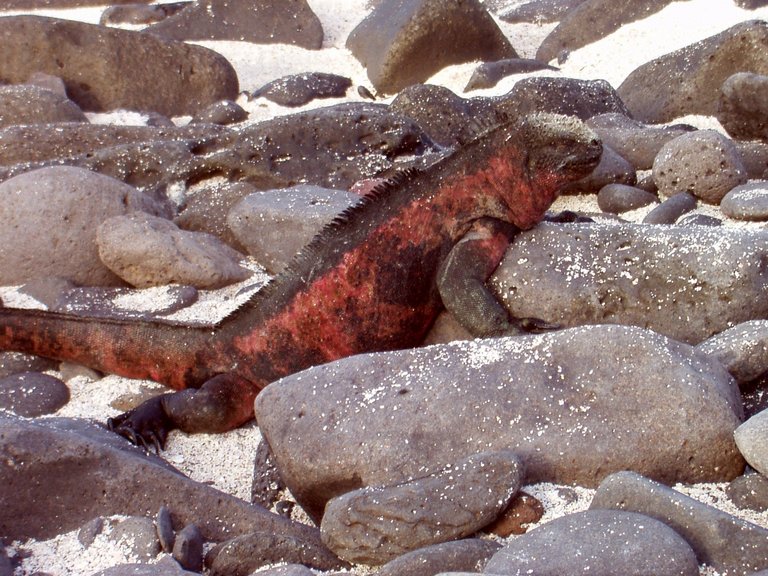As its name suggests, the marine iguana is set apart from the rest of its relative mainly because it has a unique attribute of being capable to forage and live in the seawater. The marine iguana is in truth only to be found thriving within the Galapagos Islands that is why its existence in the island has branded the reptile the name “Galapagos marine iguana”. The natural habitat of the marine iguana is on the rocky shores of the Galapagos Island but they can likewise be seen in the mangrove and marshes beaches.
Some people such as Charles Darwin describe the marine iguanas as the black lizards thriving on the sea. But the truth is that the marine iguanas are not usually black in color. The younger marine iguanas take the dorsal stripe color whereas the adult ones are grayish. Their color may be really dull but there is a reason behind this. Such color allows them to easily absorb heat right after they emerge out of the water. Their food is usually the marine algae. They expel the remaining salts from their nasal glands as they go on with basking under the heat of the sun. The salt contained in their bodies makes their faces appear whiter.
More so, the matured male marine iguanas have a varying color—all of which depend on the existing season. During the breeding seasons, the adult male marine iguanas become teal-green or reddish in colors. Those thriving in Santa Cruz appear in black and red brick while those found in Fernandina come in dull green and brick red colors. Their sizes likewise differ which depends on the island that they live in. Those found in the whole of Isabela and Fernandina are the largest marine iguanas in the entire island of Galapagos. Meanwhile, the smallest marine iguanas are to be found in Genovesa.

As said to be poikilothermic animals, the marine iguanas can only spend very little time out in the cold sea whenever they dive for their algae food. Thus, they commonly swim within the very shallow water of the island. After swimming, they proceed to bask under the sun to have their bodies warmed up again. During the cold days, the marine iguana cannot effectively move thus making them too vulnerable for their predators. Since they cannot move fast, what they do is to strike their tails up in the air and bite their enemies. During the entire breeding season, the male marine iguanas mate with the females and likewise guard them against the rest of the male reptiles.
Moreover, the marine iguanas adjust their sizes to be able to adapt to the food condition in existence. There was a time during the onset of the El Niño when the algae decreased in number so the marine iguanas actually decreased in their lengths too. When the food supply started to normalize, the reptiles returned to their normal condition. The marine iguanas are not as fast as the rest of its relatives. When taken as pets, their predators become the dogs and cats. They can be easily attacked by these predators since they are too slow and much tamed.
To date, the government of Ecuador has set up laws that aim to protect the existence of marine iguanas. There are artificial nestling sites which had been made in the smaller islands so that there will be lesser predators that can harm them.
